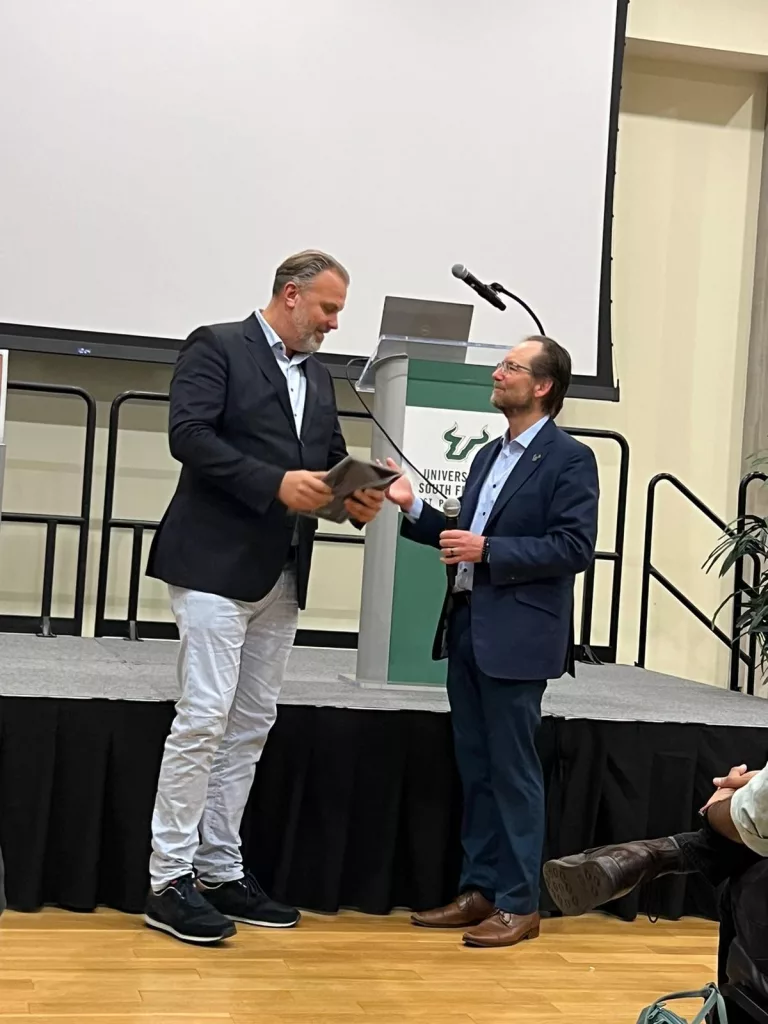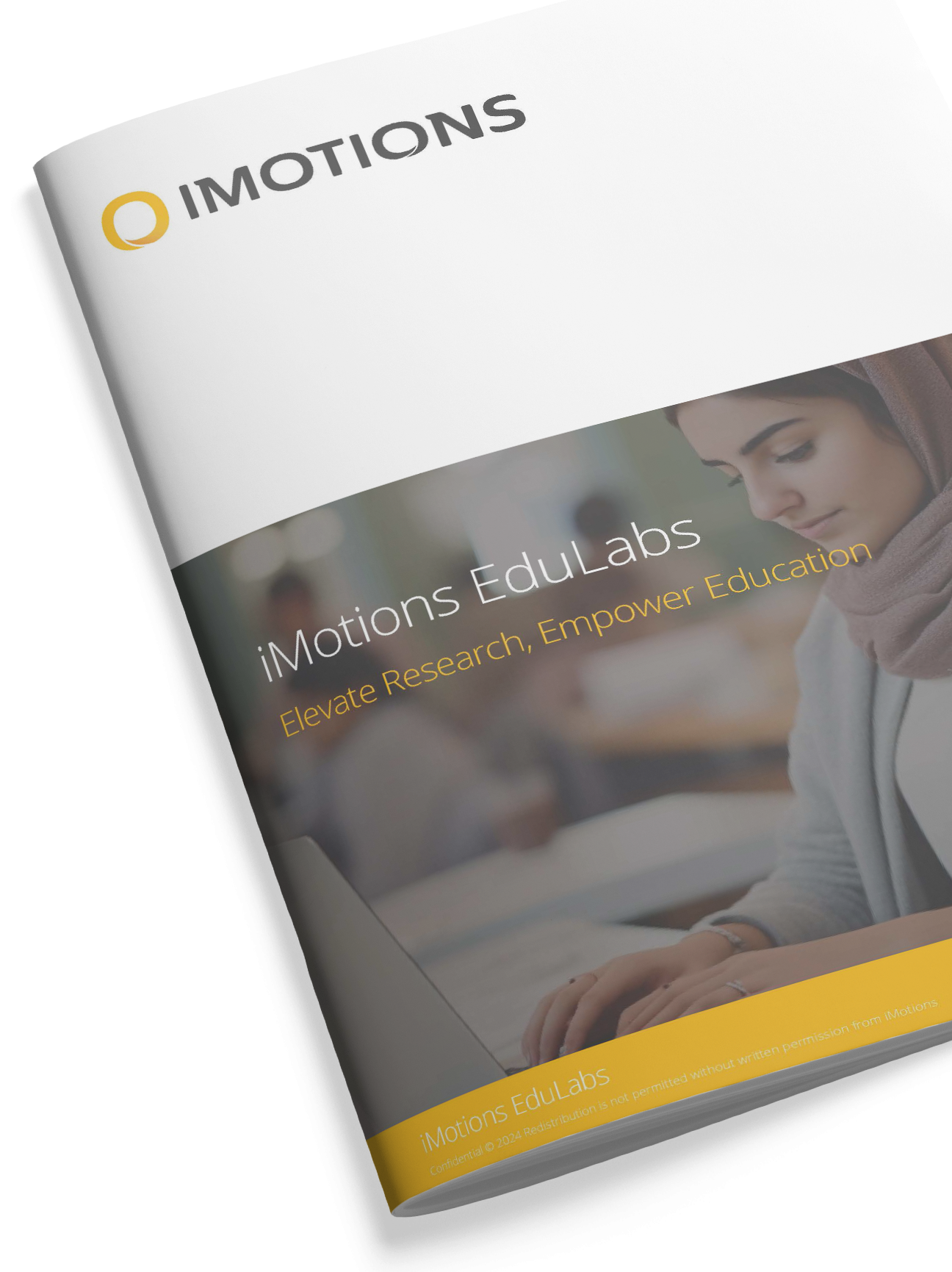Remember that first driver’s ed lesson? Exhilarating, a bit nerve wracking, and ultimately taking it very cautiously? Last year’s inaugural Affective(ly) Conference was reminiscent of that – filled with excited researchers who were just beginning to get behind the wheel of advanced biometric solutions to explore human behavior research. I just came back from the second edition, and it’s clear that lessons, practice and a license are clearly in the rearview mirror.
It wasn’t just that the attendance had doubled; the conversations, ideas and presentations were significantly elevated. From “how do I start” to “how do I implement and scale; from possibilities to realities, it felt like a growing community of researchers was cruising down the highway toward a future filled with growth, success, and groundbreaking opportunities.

Over two days at the University of South Florida, nearly 100 researchers and educators across 30 institutions came together to not only deepen their understanding of biometrics, but to crystallize a vision for the future – a vision for their students, faculties, and universities. This wasn’t a competition of individual research pursuits; but a collaborative effort to share ideas, expand research and education opportunities, and build a network of support and innovation.
The level of discussion at this year’s event was inspiring, a reflection of our community’s commitment to continuous learning and advancement. And a reminder of how iMotions needs to continue innovating to support their advancements.

Following are a few of my key takeaways from this palpable this momentum:
- The Expanding Landscape of Biometric Research. One of the most exciting revelations of this year’s conference was the sheer breadth and depth of studies enabled by biometric research. Research from this year’s host, the University of South Florida, showcased a diverse array of projects spanning various departments. From optimizing AI avatars for marketing to evaluating the efficacy of public health messaging, the projects emphasized the transformative potential of biometric technology in powering deeper and more advanced insights into human behavior.
- Funding Strategies and Collaboration is King. Funding remains a significant challenge for researchers and educators. Not only funding for labs themselves, but funding for the research they power. A key solution? Cross-department collaboration. By partnering across disciplines, institutions can access a broader pool of resources and funding opportunities. For instance, collaborations between business schools and psychology or public health departments can unlock research grants that might otherwise be inaccessible. This collaborative approach not only strengthens research capabilities but also fosters interdisciplinary learning and collaboration within universities.
- Building Research Powerhouses: Beyond intra-campus collaborations, a number of leaders talked about forging partnerships with community and industry stakeholders to elevate their research while providing educational opportunities.. In particular, Chad Milewicz, Professor of Marketing and head of the Biometrix Discovery Lab at the University of Southern Indiana, talked about his collaborations with museums to state education departments, which have bolstered research endeavors and generated external funding, as well as provided students with invaluable real-world experiences, bridging academia-industry gaps and enhancing institution reputation and recruitment.
- Empowering the Next Generation of Experts. At the very heart of this year’s conference was a powerful vision for education: integrating biometric technology into the classroom. As Chad Milweick from USI’s business school stated, “Leveraging technology in unique ways to build market-leading competencies in a personalized, co-created learning environment” is key to preparing students for the future. Educators delved into strategies for initiating and effectively integrating biometric learning into their curriculum, seeking to optimize student engagement and skill development. Platforms like our recently launched EduLabs emerged as pivotal tools for educational advancement, facilitating seamless integration of solutions such as iMotions Online into classroom settings. Through immersive learning experiences, students are equipped with the skills and insights needed for success in the workforce. This not only fosters student development and enhances job placement opportunities but also positions institutions as pipelines for companies seeking individuals with a profound understanding of human behavior and versatile skill sets.
The continued growth and energetic support of the Affective(ly) Research conference community speaks to the passion researchers have for their craft of human insights research. The community’s interests are expansive spanning methods, tools, data analysis, experimental design, and impactful outcomes that are meaningful contributions to science and business.
Rob Hammond, Director of the Center for Marketing and Sales Innovation, Muma College of Business at the University of South Florida

Flying home from this year’s conference, I continued to be amazed by the changes in just a year, and of the commitment of Rob Hammond and the University of South Florida to propel this industry forward. Those two days truly served as a testament to the progress and potential of biometric research. We can’t wait to see what groundbreaking research and educational experiences emerge from this passionate community in the years to come. So…buckle up, and get ready for the ride!
Download iMotions EduLabs Brochure
iMotions EduLabs is a complete solution that bridges the gap between education, research, industry and community, providing tools for research, teaching and collaboration.












